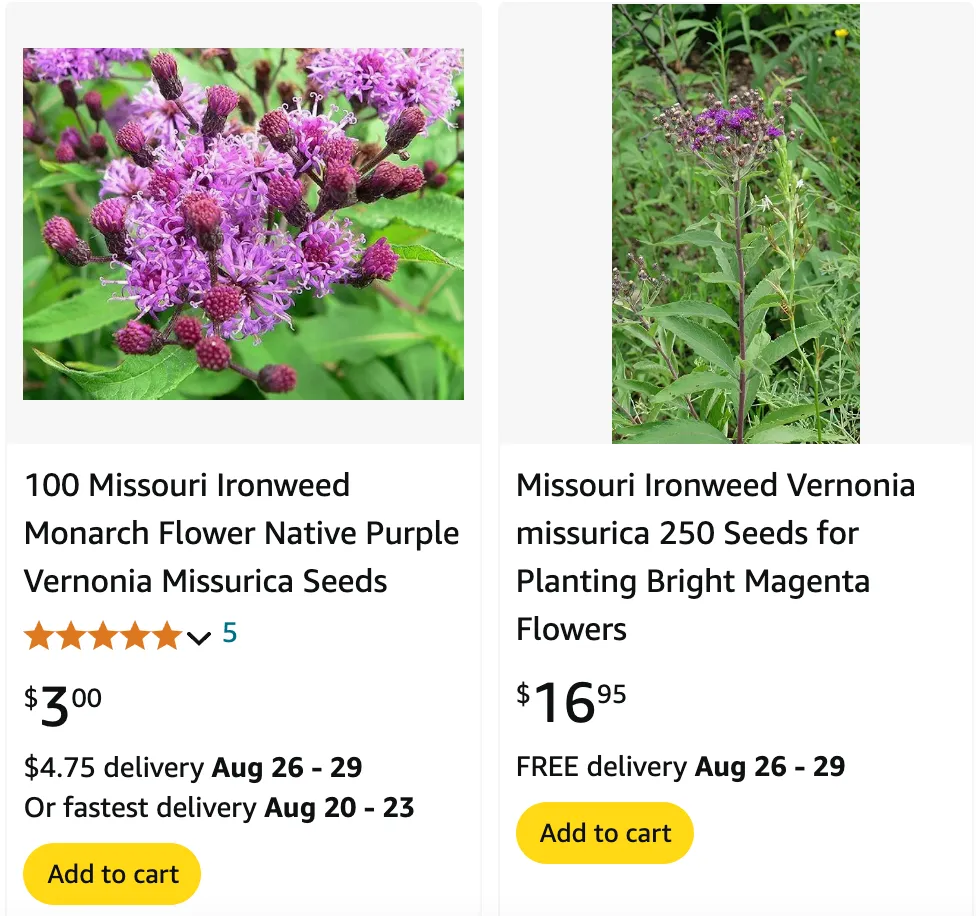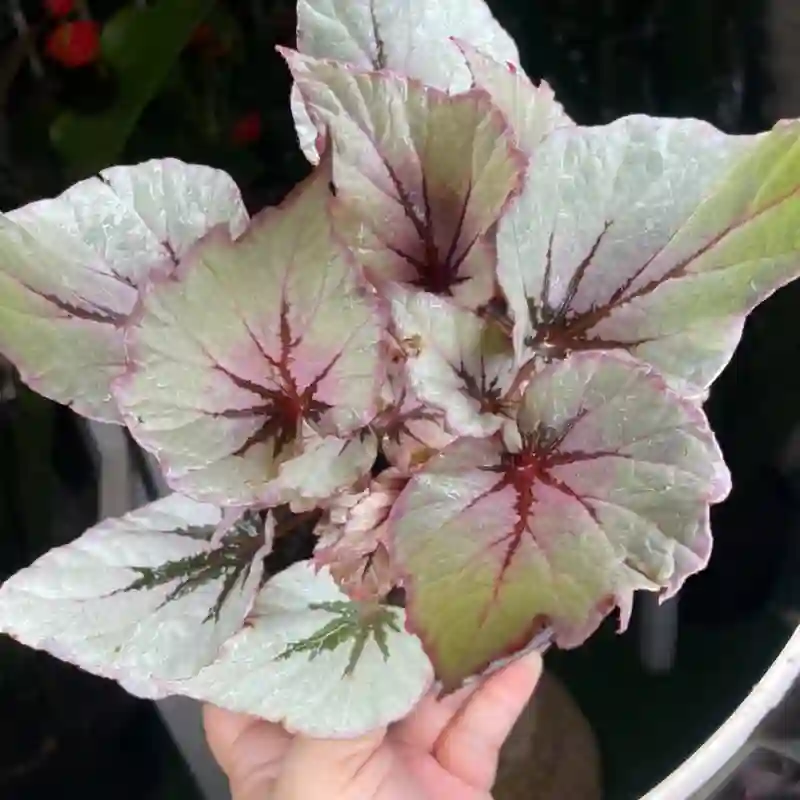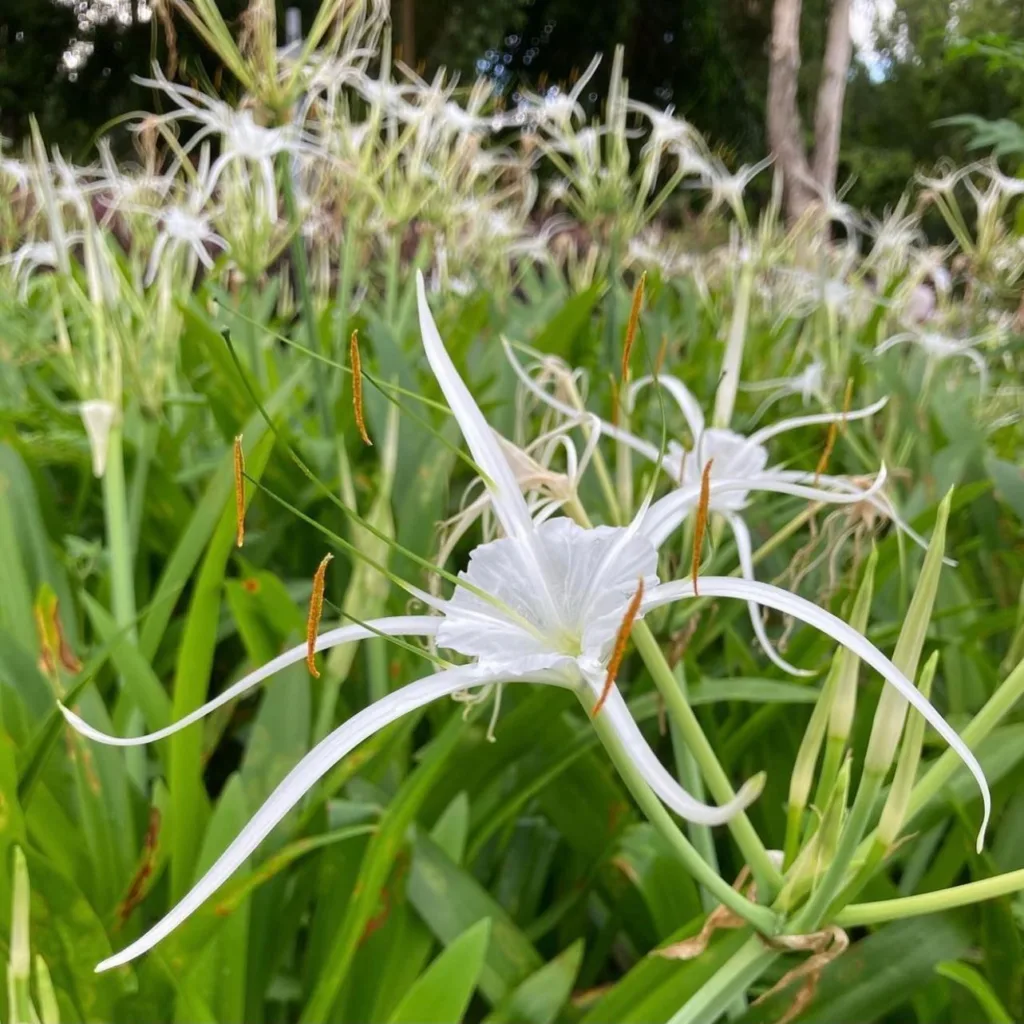
FAQs of Vernonia Missurica
Vernonia Missurica, also known as Missouri Ironweed, is one of those plants that really grabbed my attention. It’s tough, it’s beautiful, and it’s great for pollinators. I’ve had a lot of people ask me about it, so I thought I’d compile some frequently asked questions and share my experience with this stunning native perennial.
339 Species in Genus Vernonia
What Is Vernonia Missurica?
Vernonia Missurica is a tall, herbaceous perennial native to the central United States. This plant is part of the aster family and typically blooms in late summer to early fall. The striking purple flowers are what caught my eye the first time I saw it. The blooms are not just beautiful; they attract a lot of pollinators, including butterflies and bees, which adds life and movement to the garden.
The plant can grow up to 6 feet tall, with strong, upright stems and lance-shaped leaves. It’s a great choice if you’re looking to add height and color to your garden in the late season. And even after the flowers fade, the seed heads remain visually interesting.
How to Care for Vernonia Missurica?
Caring for Vernonia Missurica is surprisingly easy, which is one of the reasons I love it so much. It’s a low-maintenance plant that thrives in a variety of conditions.
- Sunlight: This plant loves full sun. If you want those vibrant purple blooms, make sure to plant it in a spot where it gets at least six hours of direct sunlight each day.
- Soil: While Vernonia Missurica isn’t too picky about soil, it does best in well-draining soil. It can tolerate both dry and moist conditions, though it prefers soil that stays consistently moist.
- Watering: Once established, Vernonia Missurica is quite drought-tolerant. However, I find that it benefits from regular watering during prolonged dry spells, especially if you’re aiming for peak bloom performance.
- Fertilizing: It doesn’t require much fertilization. A slow-release, balanced fertilizer in the spring should be enough to keep it happy.
- Pruning: I usually cut back the stems in late winter or early spring. This helps to encourage fresh growth for the new season. Don’t worry too much about the frost; this plant is hardy and can survive even harsh winters.
How to Propagate Vernonia Missurica?
One of the things I enjoy most about gardening is propagation, and Vernonia Missurica is pretty straightforward to propagate.
- Division: The easiest method is division. In early spring, before the plant starts actively growing, dig up a mature clump and gently separate it into smaller sections. Make sure each section has roots attached, then replant them in the desired location.
- Seeds: You can also grow Vernonia Missurica from seeds, though this requires a bit more patience. Collect seeds in the fall after the flower heads have dried, and sow them directly in the garden in late fall or early spring. They’ll germinate when the temperatures are right.
What to Plant with Vernonia Missurica?
I love pairing Vernonia Missurica with other native perennials that bloom at the same time or offer complementary colors and textures. Here are a few of my favorite combinations:
- Echinacea: The purples of Vernonia Missurica pair beautifully with the bold pinks and purples of Echinacea, creating a pollinator haven.
- Solidago (Goldenrod): Goldenrod’s bright yellow blooms contrast nicely with the deep purple of Vernonia Missurica. Together, they create a dynamic, late-season display.
- Asters: Asters provide a more delicate contrast to the bold structure of Vernonia Missurica. The combination of purples and blues looks stunning.
How to Use Vernonia Missurica in the Garden?
Vernonia Missurica can serve multiple roles in the garden. Here are a few ideas based on what I’ve done in my own space:
- Back-of-the-Border Plant: With its height, Vernonia Missurica works wonderfully at the back of garden borders. It provides a strong vertical element and a vibrant burst of color when many other plants are starting to fade.
- Pollinator Garden: If you’re aiming to attract bees, butterflies, and other pollinators, this plant is a must. The late-season blooms provide a critical food source for these insects as they prepare for winter.
- Wildflower Meadows: If you have space, consider planting Vernonia Missurica in a wildflower meadow setting. It pairs well with native grasses and other wildflowers, contributing to a naturalistic and sustainable landscape.
Is Vernonia Missurica Toxic?
One question I often get is whether Vernonia Missurica is toxic. Based on what I’ve found and from my own experience, this plant is not considered toxic to humans or pets. It’s always a good idea to monitor how pets interact with new plants in the garden, but I haven’t had any issues with Vernonia Missurica.
Conclusion
Vernonia Missurica has earned its place in my garden for its beauty, toughness, and ability to attract pollinators. If you’re looking for a reliable, low-maintenance perennial that adds late-season interest and supports wildlife, this is a great choice. Whether you’re a beginner or an experienced gardener, Vernonia Missurica is worth considering for your landscape. It’s a plant that will reward you year after year with minimal effort.
If i die, water my plants!



